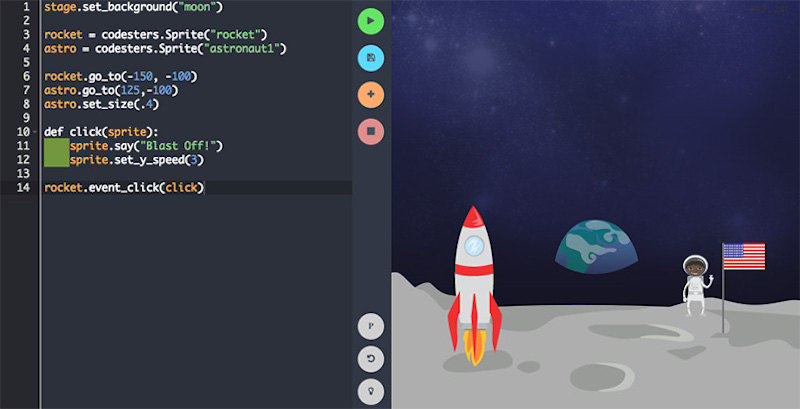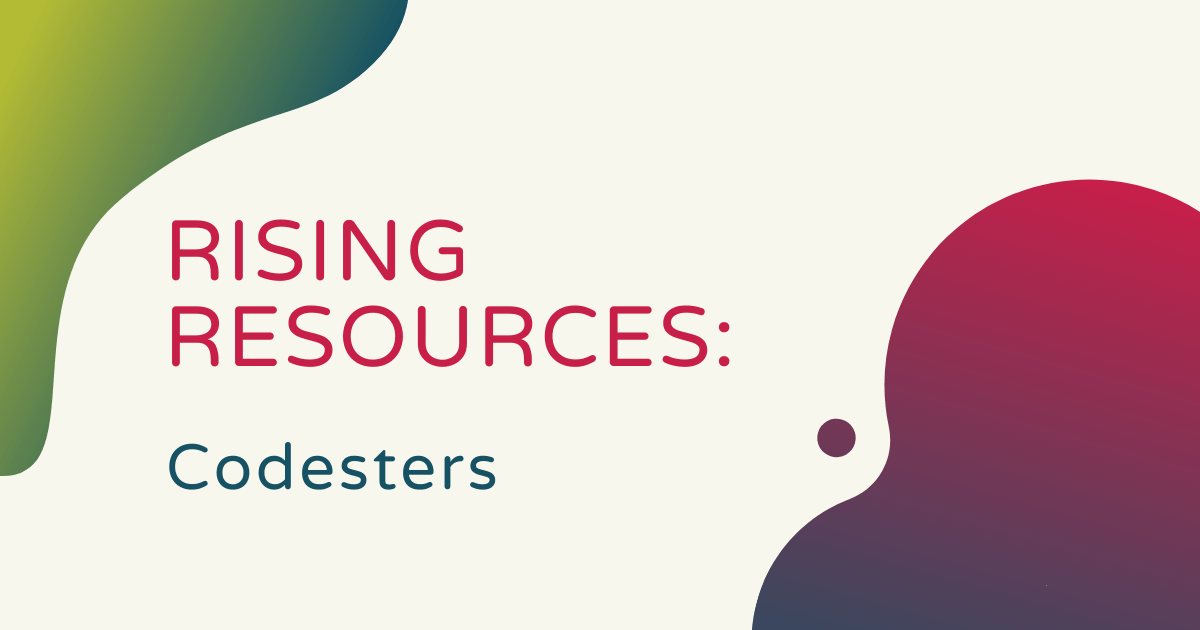With all the classroom coding tools to choose from, it can certainly be overwhelming. Especially in a time in which it might be more challenging to dedicate time to computer science, finding resources that work for you and your students is crucial. As instructional environments have evolved to allow for greater safety and personalization, teachers may have moved away from physical coding tools during the last few years. And, while it may not be the perfect solution for everyone, Codesters is a digital programming platform that is great for helping educators keep student coding opportunities flowing. So, in this Rising Resources post, we're exploring Codesters and what makes it valuable when teaching coding in the classroom.
Codesters is an online platform that teachers could use to teach middle school students the key elements of coding in any classrooms. It's free to sign up initially and features built-out coding lessons as part of the deal. It also helps make coding fun for students while providing the teachers with a strong, built-in learning management system. There are three main components to Codesters: the online coding platform itself, the learning management system, and their digital curriculum. The coding platform is a bit advanced, however, enabling students to jump right into text coding with Python. But, they could create all sorts of interactive projects, engage with animations, and follow guides for drag-to-text coding.
The coding platform itself is very interactive and designed to boost student engagement. That drag-to-text element helps reduce some of the intimidation associated with text coding and helps to lower the barrier to entry. It essentially allows children to drag smaller snippets of code directly into their programs. Once it's in the program, their snippets transform into text code, but children won't have to fully type it out themselves. From there, as students run their program, they can see what their code looks like while active. Being able to simply drag code and run a program is a huge part of what makes Codesters so accessible.
Aside from being able to drag and drop commands from the Codesters toolkit, kids also have the option of typing the Python code themselves. This allows them to learn coding syntax in a completely hands-on way and helps with distinguishing between color-coded programming elements, like variables, integers, strings, functions, and more. To run and control Codesters programs, students use what's referred to as an 'action bar' (below). This consists of four color-coded buttons for easy use: play (green), save (blue), new (orange), and stop (red). Students could also choose to share these projects on the Codesters explore page. As for those projects, they may include graphics, animations, and other interactive elements as students create things like games, simulations, and graphical images right in the Codesters platform.
Next, we have the Codesters learning management system, which allows teachers to create their classes, assign lessons, and track progress. If you're familiar with Wonder Workshop's Class Connect, it's a very similar premise. Teachers are also able to enroll students in the classes they create. When kids complete a project, it's automatically graded and placed in the teacher's dashboard so they can provide additional in-person feedback to individual students as needed. Teachers can also see students' programs or run them themselves if they need to identify where someone got stuck. This helps make it much easier for teachers to offer support since they can see the entire program and even run it for more in-depth troubleshooting.
As for progress tracking, the platform displays students in rows with their performance on each project in corresponding columns. It's also easy for teachers to add or remove kids from a class, create passwords, and set display names. If teachers have a class roster in an external document, they can simply upload it right to the Codesters platform to make the process easier. Finally, as children create and customize their coding projects, each of them saves to the class page. There, all students can share their work and see their classmates' projects. It really helps students learn from each other and instructors can even instill a sense of community among the class.

Finally, we have the Codesters curriculum, which is a mixture of free content and some paid licenses. This curriculum features structured coding lessons based around the Python language. Following their guides, students build projects and then have the chance to modify their code to add greater customization. Each project even provides students with a choice between exit points, which helps create useful opportunities for differentiation. The curriculum is entirely project-based with students tasked to create a new project as part of each lesson. While working on the projects, they're also simultaneously developing specific coding skills relative to each challenge. They each take about one hour to complete but students are free to move at their own pace. Once complete, the projects are automatically graded and shared to the class page.
The Codesters curriculum consists of three phases: build, modify, and create. Kids often start by following the project guides and use the examples to better understand the essence of the project. The step-by-step representation shows them how to build every project while they simultaneously develop their coding skills. While they're building, they also receive on-screen feedback whenever it's necessary, including debugging activities as needed. Once students have the project built, their next challenge is customizing it in different ways in Phases 2 and 3. While modifying their code, they're also reviewing each component and gaining a better understanding of its structure. To cap things off, they can create their own project from scratch on a blank canvas and apply what they learned.
After receiving some initial guidance, children typically then feel more comfortable with creating interactive projects and apps on their own. There are also demo videos within the Codesters website to help teachers and students learn more about how to start. And, there are targeted coding courses on Python, Scope and Sequence, and grade-specific topics for the middle schoolers, too. The teach-create-learn-code approach really helps make text coding less intimidating in the eyes of students. By the same token, Codester's LMS features will help simplify everything for educators. The Codesters team also offers informative professional development and webinars for educators and it is free for up to 30 students to try for 30 days. You can find additional plans and pricing information on their site. Follow us on Twitter and Instagram for more.



